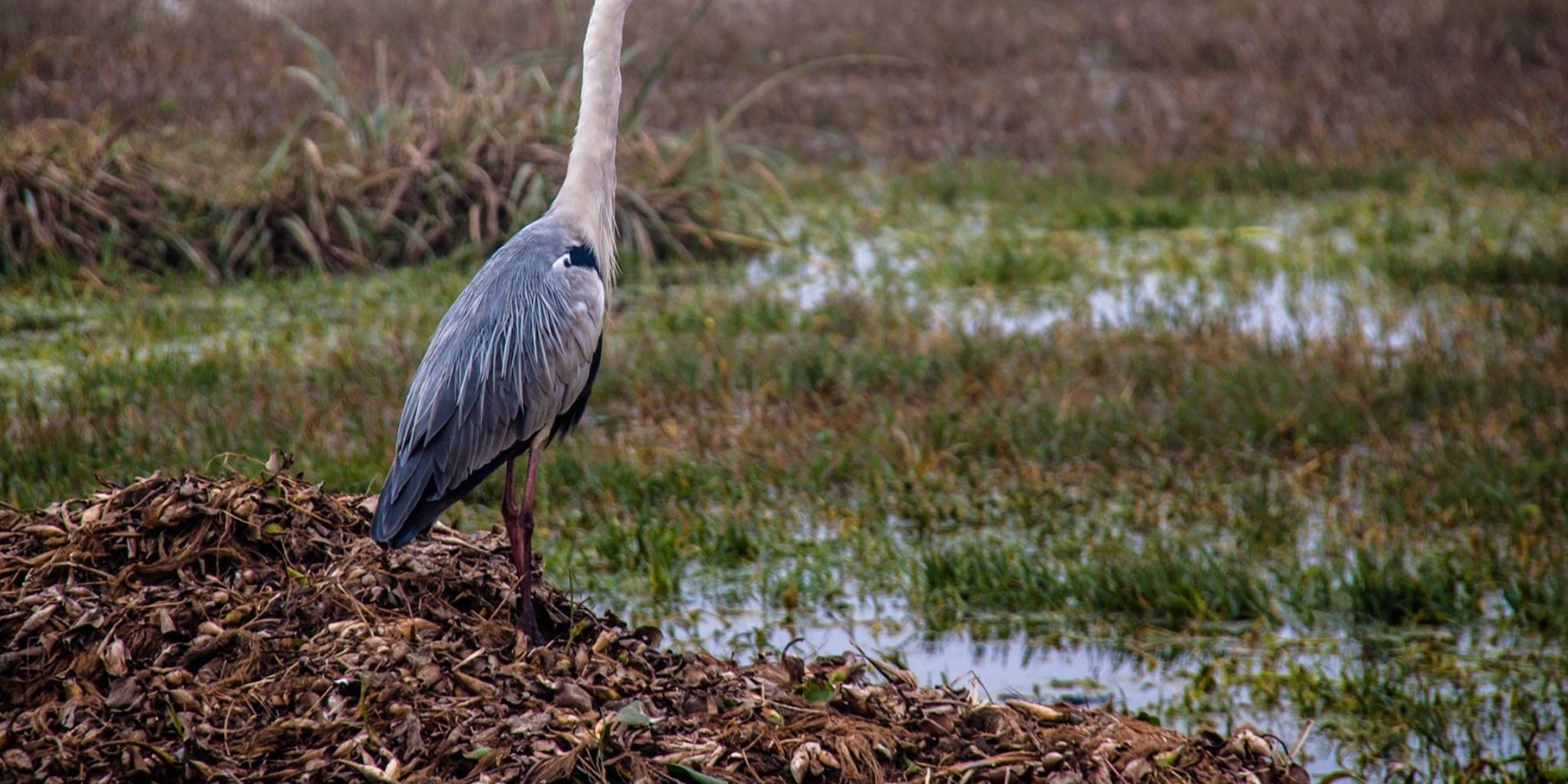
Some address it Keoladeo National Park and some define as Ghana National Park; the Bharatpur Bird Sanctuary, a World Heritage Site, is the perfect home to almost thousands of birds all across the world. Located in Bharatpur, Rajasthan, it's a famous Avifauna Sanctuary that hosts almost thousands of birds especially in winter season to find the migratory species. Amazingly, at least 230 species of birds have made this sanctuary their favorite home and is the most favorable and protected zone for them. Nesting indigenous water birds and migratory water birds specifically the Siberian Crane, the Bharatpur Sanctuary also boasts with many species of Sambar, Chital, Nilgai and Boar. It is the major tourist spot for most of the ornithologists today during hibernal season.
Wildlife in Bharatpur Bird Sanctuary
The numerous counts of the bird species are the major attractions for the tourists in Bharatpur. These species fly through distant places like Siberia and Central Asia specifically in winters. Migratory birds at Bharatpur Bird Sanctuary include several species of Cranes, Pelicans, Geese, Ducks, Eagles, Hawks, Shanks, Stints, Wagtails, Warblers, Wheatears, Flycatchers, Buntings, Larks and Pipits, etc. Along with that some major counts of Sambal, Chital, Nilgai and Boar can also be found at the sanctuary.
Flora:
The forest in Bahratpur is semi-arid biotype with significant vegetation and that is why the sanctuary is termed as 'Ghana'-thicket. Principally it is a dry deciduous forest type, intermixed with dry grassland in the area where the forest has been degraded. Along with that the forest is also being covered with medium sized trees and shrubs.
The north-east region of the forest is being ruled by kalam or kadam (Mitragyna parvifolia), Jamun (Syzygium cumini) and Babul (Acacia nilotica). The open woodland is mostly babul with a small amount of Kandi (Prosopis cineraria) and Ber (Zizyphus).
The open woodland is coveredwith babul with a small amount of kandi and ber. Scrublands are dominated by ber and kair (Capparis decidua). Piloo (Salvadora oleoides and Salvadora persica) are virtually the only woody plants found in areas of saline soil. The aquatic vegetation is rich and provides a valuable food source for waterfowl.
The scrublands are filled with Ber and Kair and the soils are greatly alluvial with some of the clays being formed as a result of periodic torrents. The annual precipitation at Bharatpur zone is 662mm, with rain falling on an average of 36 days per year.
Fauna:
In Bharatpur, mostly the macro invertebrates like worms, insects and mollusks can be found in abundance which are mostly can be found n aquatic marine. These insects are the common foods of the birds and the fishes of the marine world and bring a major link in the food chain with a good control in the ecosystem. . Land insects are in abundance and have a positive effect on the breeding of land birds.
Basically a bird paradise, the Bharatpur Sanctuary boasts almost 370 bird species. This sanctuary is an ideal host for so many bird species because of its strategic location to attract migratory waterfowl in the Indian subcontinent before dispersing to various regions. In addition, the wetland is a wintering area for massive congregations of waterfowl. It is the only regular wintering area in India for the Critically Endangered Siberian Crane.
Bharatpur Sanctuary at a Glance:
Location- Bharatpur, Rajasthan
Established- 10 March 1982
Nearest Access- Bharatpur, Jaipur, Agra, Delhi
Main Wildlife Found- Sambal, Chital, Nilgai, Boar, Migratory Birds
Coverage Areas- 29 sq kms, 2873 hectares
Types- Natural (Dry Deciduous with dry grassland)
Best Time to Visit Bharatpur Sanctuary
Although remain opened throughout the year, still the ideal months to make a visit are:
For resident breeding birds- during Aug-Nov
For migrant birds-from Oct-Feb

